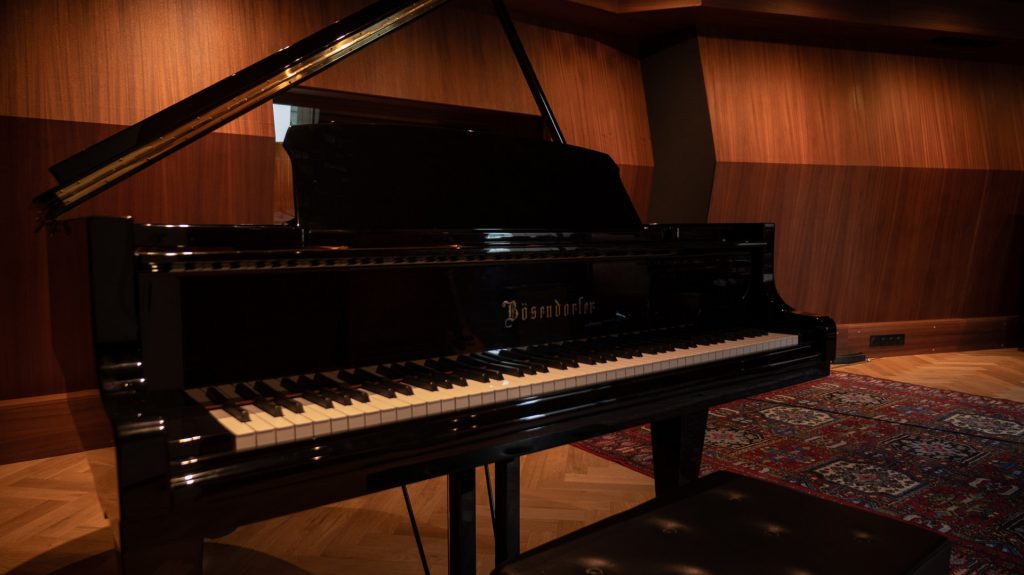Songwriting: Piano
 As a songwriter, but also as a producer, it can be useful to be able to play an instrument. This gives you extra freedom within the creative process that is songwriting and music production. At the Wisseloord Academy there is also the possibility to improve your skills on the piano, for example.
As a songwriter, but also as a producer, it can be useful to be able to play an instrument. This gives you extra freedom within the creative process that is songwriting and music production. At the Wisseloord Academy there is also the possibility to improve your skills on the piano, for example.
But if playing a piano is something completely new to you, it is nice to first know the ins and outs of this instrument.
Types of Pianos
Pianos come in many different shapes, sizes, and brands. The most common variations are the grand piano, the upright piano, and the electric piano.
When people think of a piano, most people immediately think of the grand piano. What characterizes this piano is that the top can be folded open at an angle. The grand piano has its strings stretched horizontally in its case. It is also usually the largest piano there is out there.
A smaller variant of piano is the upright piano. Unlike the grand piano, the upright piano has its strings positioned vertically, so that the piano takes up less space than its bigger brother.
The grand piano and upright piano are acoustic instruments that can be heard without amplification when played, unlike the electric piano. As its name suggests, it is fully electric, and the sound must be amplified to be heard. The advantage of this instrument is that you can often give many different types of sounds to the piano, so that you can vary a lot with it. They are also often much smaller than the ‘regular’ pianos.
The construction of a piano
The construction of a piano roughly consists of the keyboard, the strings, the hammers, the cabinet, and the pedals.
The skeleton of the piano is the cabinet. Inside you will find the strings and the hammers that ensure that you can hear the well-known piano sounds. The pianist plays the piano through the keyboard. The keyboard consists of the well-known white and black keys. As soon as a key is struck, the corresponding string in the cabinet is struck by a hammer. This causes the string to vibrate, eventually creating the piano sound.
The grand piano also has three pedals at the feet, each with a different function.
The right pedal ensures that the sound of a note sustains as soon as you hold down the pedal. When you press it, you lift the dampers of the strings, and the strings continue to vibrate.
The middle pedal has the same function as the right pedal, but you can use this pedal to make individual keys sound.
The left pedal shifts the hammers slightly to a different place when pressed, which changes the sound of the strings and the volume of the sound.
Now that you have the basics of how a piano works, feel free to start practicing!
